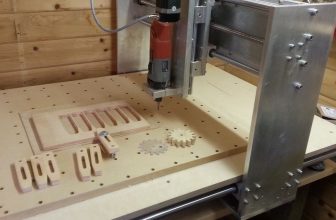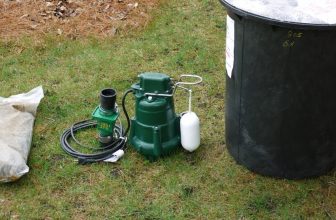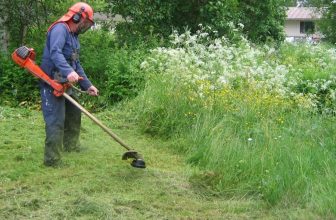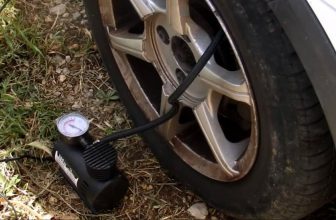Finding a hidden stud can be quite a challenge if you do not have the right tools for the job. We are, of course, talking about stud finders, which are the type of tools that professionals everywhere usually have in their arsenal. Now, we should point out that stud finders are available in many forms, each with their own particularities. For this reason, it really pays to educate yourself on what makes a good stud finder before acquiring one yourself, especially if it’s your first time buying one. To help you through, we put together a list of the ten best stud finders money can buy.
10. Stanley 47-400
This quality stud finder employs a magnet to easily locates steel screws and nails, providing a reliable wall studs detection. At the same time, it has a notched base for easy, convenient marking once the studs are located. Its dome/ harness are fixed under a sturdy plastic browsing sled whose smooth bottom ensures seamless scooting over wallboards. Not only that but the magnet has a high affinity for any nail-heads beneath difficult-to-reach spots, as its toggle quivers whenever the unit is steered over some nail.
9. Black & Decker SF100
B & D’s SF100 is yet another wonderful stud finder, one that withstands even the toughest project without any inefficiency, a versatility that makes it perfect for ambitious DIYers and professionals alike. It also comes with 2 AA alkaline batteries that support a longer-lasting operation and an improved peak performance overall. Moreover, it boasts an easy, compact design that is very convenient and ergonomic.
8. The StudBuddy 001
The StudBuddy might just be the simplest stud finder in the world today. It sticks to your wall for reliable visual reference when hanging shelves, paintings, cabinets, hooks, mirrors, flat TV sets, or other heavy items without employing any complicated technologies. It is a very simple to use stud finder that works for both metal and wood studs. It has no batteries, moving or electronic parts, and thus easy to handle.
7. Diamond Resource 10129-ST
Contrary to costlier electronic stud finder models, the Diamond Resource 10129-ST involves zero guesswork with various surface thickness or even internal materials in the ceiling or walls. This stud finder features super strong and highly sensitive dual magnets for excellent stud detection and zero false readings. Its dual action locator provides a distinct thud and a superior magnetic pull to indicate exactly where the studs are. It is also highly portable and easy to use, which may explain its popularity to some extent.
6. Bosch GMS120
The Bosch GMS120 is a great stud finder, one that features a multimode detection scope technology for an improved performance overall. As such, it can detect metal objects, wood studs, or live wiring in walls or floors, letting you know what to expect at any given moment. It also integrates a deep detection mode of pipes deep in concrete up to 4-75 inches. For its consistent and versatile performance, it is a perfect tool for electricians, carpenters, plumbers, masons, and any other construction works who want a reliable stud detection.
5. Precision Sensors Profinder 5000
To detect wood, metal, as well as other hidden objects in your wall or ceiling, you can trust the Precision Sensors Profinder 5000 to get the job done quickly and efficiently. You only need to place it on the wall and let the integrated LED lights effectively locate the studs. Its bigger sensor pad area ensures more accurate stud detection than almost any other stud finder on the market today. At the same time, it employs an integrated innovative technology that can sense the wall in numerous locations at once to find studs a bit faster.
4. Studpop Magnetic 100480-SP
The Studpop Magnetic 100480-SP is among the most affordable but unique stud finder models on the market today. Pocket-sized yet highly reliable, it is simple to hold, carry, and slide over and around a wall. To effectively locate the studs, you are advised to run this tool along your wall and once it has sensed any stud, simply let it pop out naturally. On a related note, keep in mind that this compact stud finder is extremely easy to carry and store given its relatively small proportions.
3. Zircon StudSensor e50-FFP
Featuring a small but easy to read LCD screen, Zircon StudSensor e50-FFP shows you the positions of the studs edges hidden in any wall. In stud scan mode, it is able to locate wood or metal stud edges up to 19mm deep. Furthermore, in its deep scan mode, it scans stud edges up to 1.5 inches deep. Its spotlight pointer technology shines a pointed-shaped light on the target, while a wire-warning detection shows where any live wires are. Other highlights include an ingenious technology for an improved stud finding efficiency and a comfortable handle for good measure.
2. ProSensor 710 Franklin
Another high-ranking stud finder, the ProSensor 710 integrates an innovative stud-sensor technology for instant and effective results. It is a patent-pending detector that simultaneously scans the wall in up to 13 locations in as little time as possible, after which it illuminates the display elements which are in front of the studs. For this reason, this finder works faster and with greater accuracy than other models.
1. CH Hanson 03040
This is a highly regarded stud finder that utilizes powerful rare earth magnets for pinpointing the precise location of nails or screws in a stud. It is an easy-to-use carry tool since it doesn’t need batteries or any calibrations to speak of. We should also point out that the rare earth magnets it employs make it hang hands-free on the walls, eradicating the need for pencil markings while its ergonomic design withstands drops and bang impacts. Overall, it is perhaps one of the best stud finders the market has to offer right now.
The Homeowner’s Guide To Stud Finders
A stud finder is a tool that many professional contractors consider an essential tool, but which end up baffling some homeowners. That’s because although these devices are simple to operate, not all of the one’s available work the same way. And this results in many homeowners using their stud finder in the wrong way. Of course, the consumer’s lack of knowledge may have other unintended effects as well. It also means that homeowners aren’t always buying the best stud finders in the first place.
In order to correct this problem, we decided to write this guide on buying and using a stud finder. Hopefully, this guide will enable everyone to find the best model for them, regardless of whether they’re a novice, a professional or somewhere in between. So let’s get started and start off with what people should look for when buying a stud finder.
Choose The Type Of Stud Finder
Stud finders come with all kinds of different bells and whistles, but they can basically be grouped into just one of two groups. There are magnetic stud finders and there are electronic stud finders. Let’s take a look at each individual type and see the pros and cons of each type.
Magnetic Stud Finders
Although magnetic ones are generally cheaper than electronic ones, they require a little bit more expertise to use. That’s because they rely on the user sweeping along the wall in a very specific way to pick up the nails that exist in the studs. It also requires the user to make many cross-sweeps to ensure that what they’re picking up are the actual nails in the stud and not something else like a stray staple. If you’re going to go with a magnetic stud finder, however, it’s important to choose a quality one like the CH Hanson or Stud Pop models and learn how to use it correctly.
Electronic Stud Finders
Electronic stud finders are generally more expensive than magnetic ones but they’re also generally easier to use. That’s because they tend to rely on the density of the wall to determine if there’s a wall stud and don’t depend on having to find stray nails in the stud to work. And many of these electronic models also come with advanced features that also improve their accuracy and usefulness. One of these features is an AC warning light, which can light up and sound an alarm when the stud finder goes over an area that likely contains electrical lines. The homeowner still has to learn how to use these models, but the learning curve isn’t as steep as when they’re using magnetic models.
Additional Features
No matter what model you choose, however, you’ll want to make sure that it has the features that you need to get the job done. As we stated above, there are a number of different features that can be found on electronic models and those include AC Warning Alerts, Visual Displays, and Audible Warnings. On the other hand, magnetic models tend to be pretty basic, so they don’t have extra features.
How To Use A Stud Finder
Although we’re not going to go over the basics of using a magnetic stud finder, what we can do is provide the homeowner with some information on using an electronic one. The reason we made this choice was that you can use magnetic ones in much the same way as electronic stud finders, but you have to inspect more sections of the wall to be sure you get an accurate reading. Having said that, let’s get started on how to use a stud finder.
Step One: Gather Your Tools
Grab your favorite stud finder, place fresh batteries in it and make sure that it’s operating properly. Also, be sure to grab a pencil because you are going to need to use it to mark the location of the studs on the wall.
Step Two: Begin Using Your Stud Finder
Make sure that you place the stud finder flat on the wall and turn it on. Slide the unit across the wall until the light indicates the location of a stud. When that happens, then take a pencil and mark that location. Usually, studs are spaced 16-inches to 24-inches apart, so you should locate other studs to confirm you accurately located the first stud. Always make sure that you verify more than one stud, spaced at standard distances, to make sure your readings are accurate.
And that’s all there is to properly using a stud finder. All it takes to use one of these devices properly is a little bit of patience and a willingness to familiarize yourself with your particular model. If you do that, then you’ll quickly discover these devices are more than worth keeping in your home’s toolbox.















